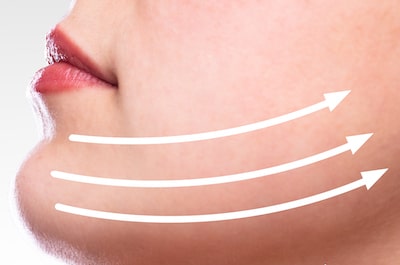Liposuction is a commonly performed procedure that uses a suction tube (cannula) to remove stubborn fat deposits from the body. It continues to be one of the most popular cosmetic procedures in the United States (for both men and women). In the year 2015 alone, nearly 400,000 liposuction procedures were performed in the United States. The stomach, hips and thighs are some of the most popular areas on the body for liposuction procedures. However, liposuction can also be performed on other areas of the body including the face. Cheek liposuction involves the removal of fatty tissue from the cheeks and it is usually performed when individuals cannot improve the look of chubby cheeks through traditional diet and exercise.
Cheek liposuction involves the permanent removal of fatty tissues and fat cells from the cheeks. Many patients choose to undergo the procedure to contour and shape the face for a more pleasing, slimmer profile and pronounced jawline.
Cheek liposuction is done in the same manner as liposuction procedures on other parts of the body. Only a few ounces of fat are removed during a typical cheek liposuction treatment. In addition, cheek liposuction differs from other procedures to slim the face (such as buccal lipectomy). While both cheek liposuction and buccal lipectomy involve removing fat from the face, buccal lipectomy involves the removal of the complete buccal fat pad.
 Cheek liposuction is often performed as an outpatient procedure under general or local anesthesia or intravenous sedation. Patients can generally go home after the procedure is complete. The entire treatment usually lasts from 30 to 60 minutes.
Cheek liposuction is often performed as an outpatient procedure under general or local anesthesia or intravenous sedation. Patients can generally go home after the procedure is complete. The entire treatment usually lasts from 30 to 60 minutes.
Your surgeon will first examine the area of the face to be treated and mark the cheeks on the appropriate area. After this consultation with your doctor, you will be given local or general anesthesia. If general anesthesia is chosen, you will be asleep during the entire procedure. At the start of the surgery, your doctor will make small incisions to gain access into the cheek area. There are several different liposuction techniques that can be utilized to help make the fat tissue easier to remove:
After the surgeon has used one of the above liposuction techniques to loosen and break up the fat, he (or she) will insert a long, slim metal tube called a cannula. Then, the doctor will attach the suction device securely to the cannula. The fat will be removed through the cannula when the suction device is turned on.
Swelling, soreness and burning sensations may occur after cheek liposuction. These symptoms are temporary and will disappear shortly after the treatment. Some swelling and soreness will continue around your face. This swelling and soreness will gradually lessen as the area heals and should be easily mitigated with over-the-counter pain medications. Your doctor will ask you to wear a compression garment over your head during your recovery period. This garment will cover your jaw and neck and support the tissue during the healing process. The average time for full recovery from cheek liposuction is 3 to 4 weeks.
After the procedure, your face and cheeks should have a more contoured and lean appearance. Fat cells are permanently removed during a liposuction procedure.
There are several factors that make a patient a good candidate for liposuction:
Patients with thin skin or healing disorders are not good candidates for liposuction. The skin must be elastic to prevent sagging or dimpling.
Some standard complications after cheek liposuction procedure include swelling and discomfort.
These normal symptoms are easily managed with over-the-counter medications and will diminish as the patient heals from the procedure. As with any medical procedure, there are potential complications with cheek liposuction. Some of the more serious risks include:
Contact an experienced and board-certified surgeon today to learn more about undergoing cheek liposuction surgery.